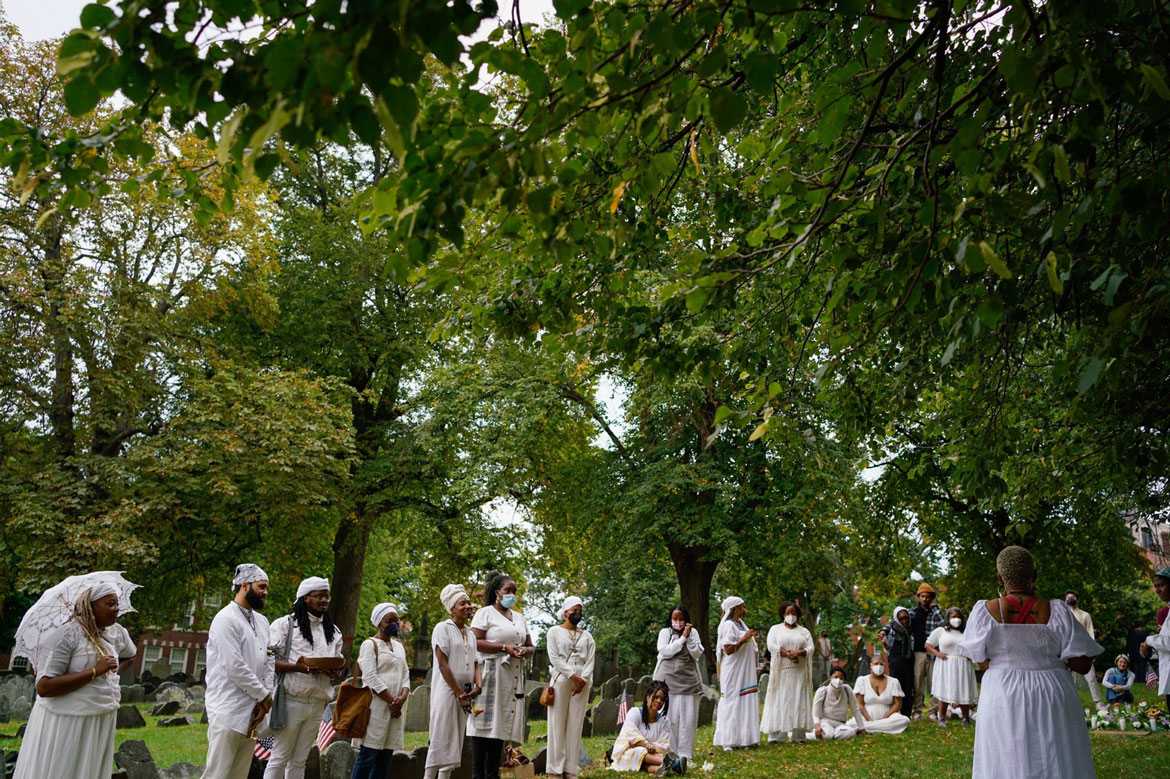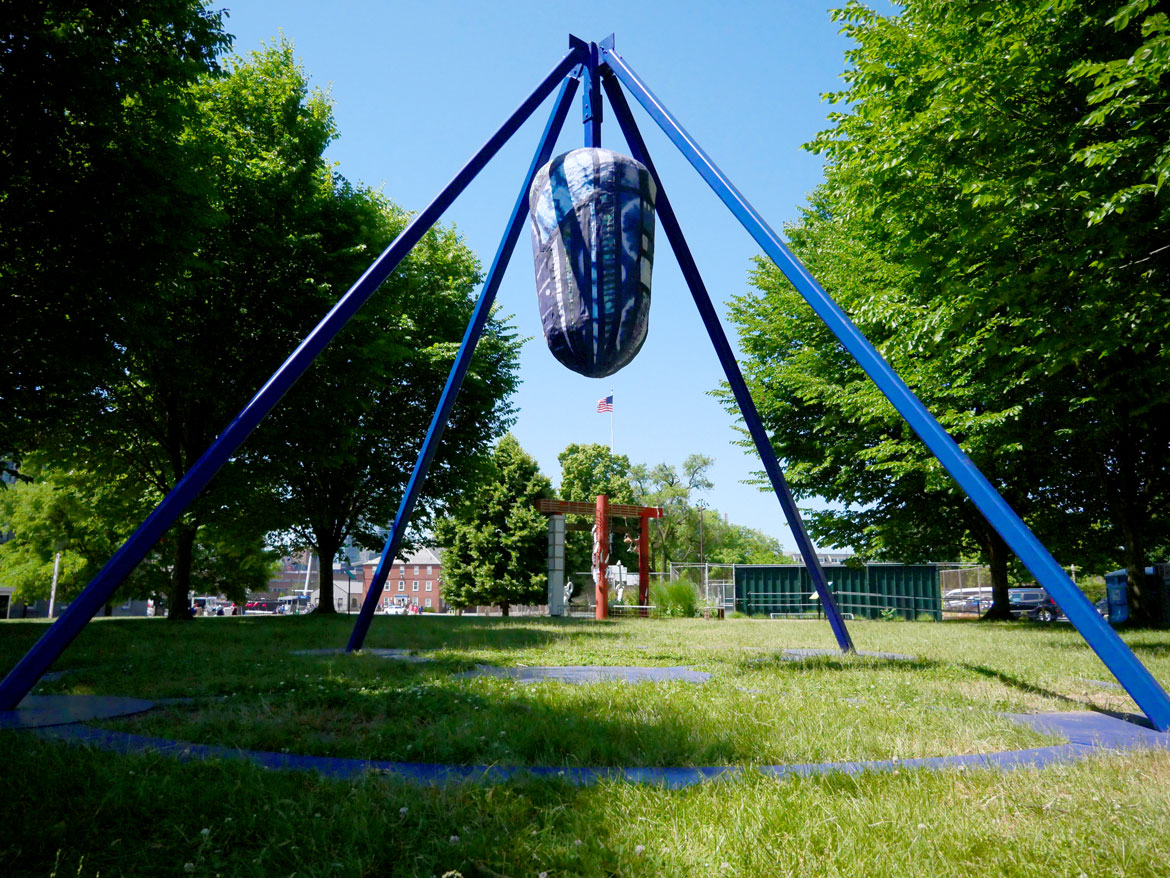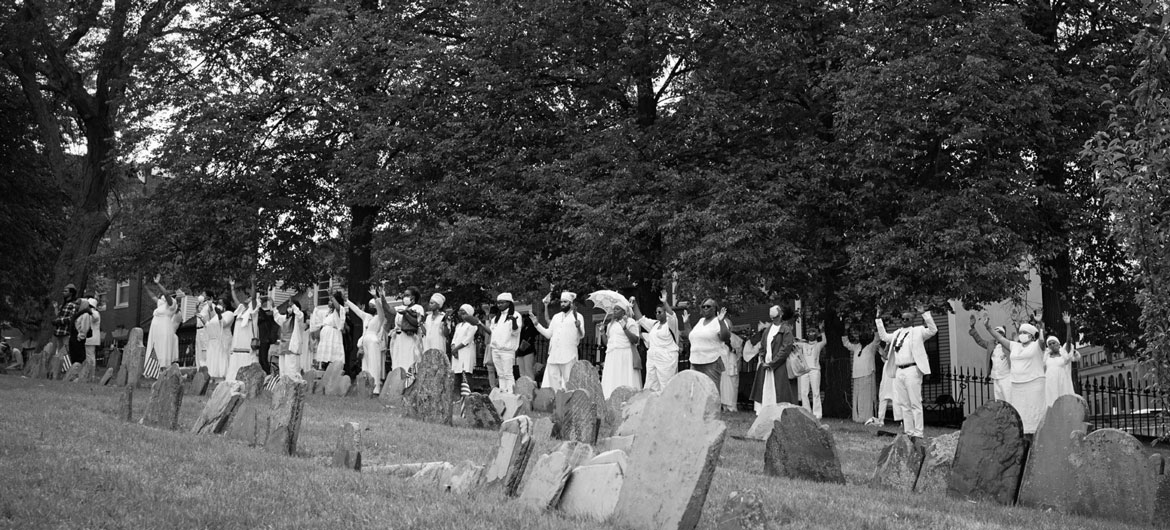“We’re there to lift up the spirits and the vibrations of the thousands of free and enslaved Africans and African-Americans that are buried there,” Ifé Franklin says of her “Egun Ancestor Procession” planned for Copp’s Hill Burying Ground on Hull Street in Boston’s North End at 2 p.m. Saturday, June 15. She also has an “Ancestor Procession / Sound Bath Ritual” planned for the Lot Lab in the Charlestown Navy Yard at 2 p.m. Saturday, June 22.
Franklin’s processions, the Roxbury artist writes, are “community rituals that honor the lives of the enslaved whose burial sites are often forgotten. Each journey offers a healing balm to heavy hearts that are grappling with the difficult history of enslavement.”
It’s believed that Europeans brought the first enslaved Africans to the Massachusetts Bay Colony in the 1630s. While the Commonwealth of Massachusetts reports that “between 1755 and 1764, the Massachusetts slave population was approximately 2.2 percent of the total population,” slavery was common among well-to-do whites. Slavery was only abolished in 1783 when enslaved people successfully sued for their freedom under the Commonwealth’s 1780 constitution, which stated “all men are born free and equal, and have . . . the right of enjoying and defending their lives and liberties.”
Franklin notes, “There are enslaved people buried in Harvard Square. There are enslaved people buried in Brookline.”
Copp’s Hill Burying Ground on Hull Street in Boston’s North End “was Boston’s largest colonial burying ground, dating from 1659,” according to The Freedom Trail Foundation. Legendary Puritan minister Cotton Mather was buried there—as was Prince Hall, the anti-slavery activist, Revolutionary War soldier, and founder of the black Masonic Order.
“Countless free African-Americans are buried in a potter’s field on the Charter Street side of the site,” The Freedom Trail Foundation writes. More than 1,000 Black people are believed to be buried there. Franklin notes, “There are two headstones at the bottom and the rest of that is empty.”
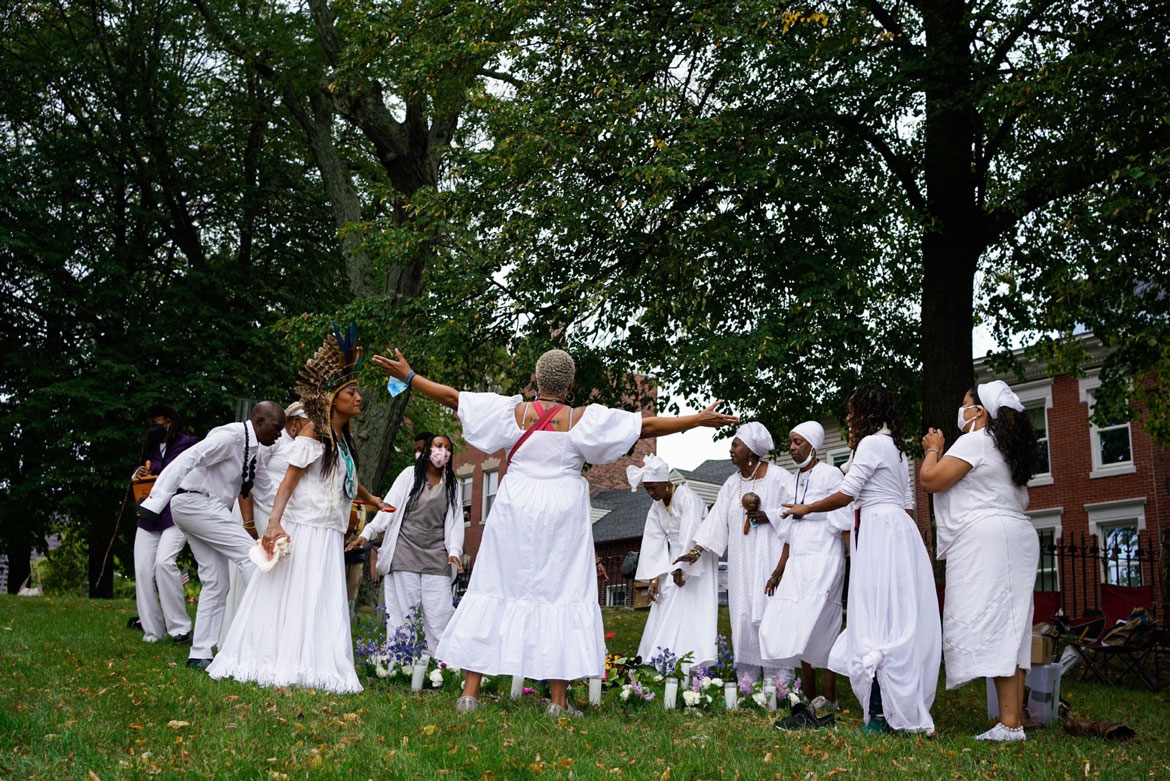
“We go there, we sing, we pray, we ask people to do an ancestor call. We’re there to sing and pray and hold space with some people that had a really hard existence, and here I am,” Franklin says of the program, which is presented with support from the Boston Mayor’s Office of Arts and Culture, Old North Illuminated, National Parks of Boston, Proverb Agency, and HUB History. “I want to venerate them. I want to hold them in the light and let them know they’re loved and not ignored.”
All are welcome to walk in Franklin’s June 15 and 22 processions: “Please wear white clothing and bring your own seating. White allies/abolitionists will respectfully follow behind People of Color during the processional.”

Franklin plans a “Processional for Mark, Phillis, and Phebe” at the Charlestown Navy Yard at 2 p.m. Saturday, June 22, where her sculptural installation “The Resurrection of Mark, Phillis, & Phebe” is on view as part of the Boston Public Art Triennial’s Lot Lab at 1 5th St. beginning June 10 and continuing throughout the summer.
Mark, Phillis and Phebe were enslaved in Charlestown in the 1700s by Captain John Codman—an ancestor of the person for whom Boston’s Codman Square is named. “The way they fought for their freedom is they murdered their enslaver,” Franklin says. They are said to have poisoned Codman. “The story I heard is Mark was hung, Phillis was burned at the stake, and Phebe was sent to the Caribbean to slave death, to work in the sugar cane fields.”
Franklin says after Mark was executed in Cambridge, his body was displayed in an iron cage—a gibbet—in Charlestown for two decades.
“Once I heard the stories of Mark, Phillis and Phebe, I knew I wanted to be involved in uplifting their souls,” Franklin says. Her sculpture at Lot Lab reimagines the gibbet as a cocoon, covered in Nigerian adore, indigo-colored fabric with a quilt-like pattern. It hangs from four metal posts. “A cocoon is a transformative vessel,” Franklin says. She wants it to be beautiful, loving, soft, “transformative for their souls.”
“That will invite the spirits of Mark, Phillis and Phebe to come to rest. Because personally I think the spirits of Mark, Phillis and Phebe are still locked in that area,” Franklin says.
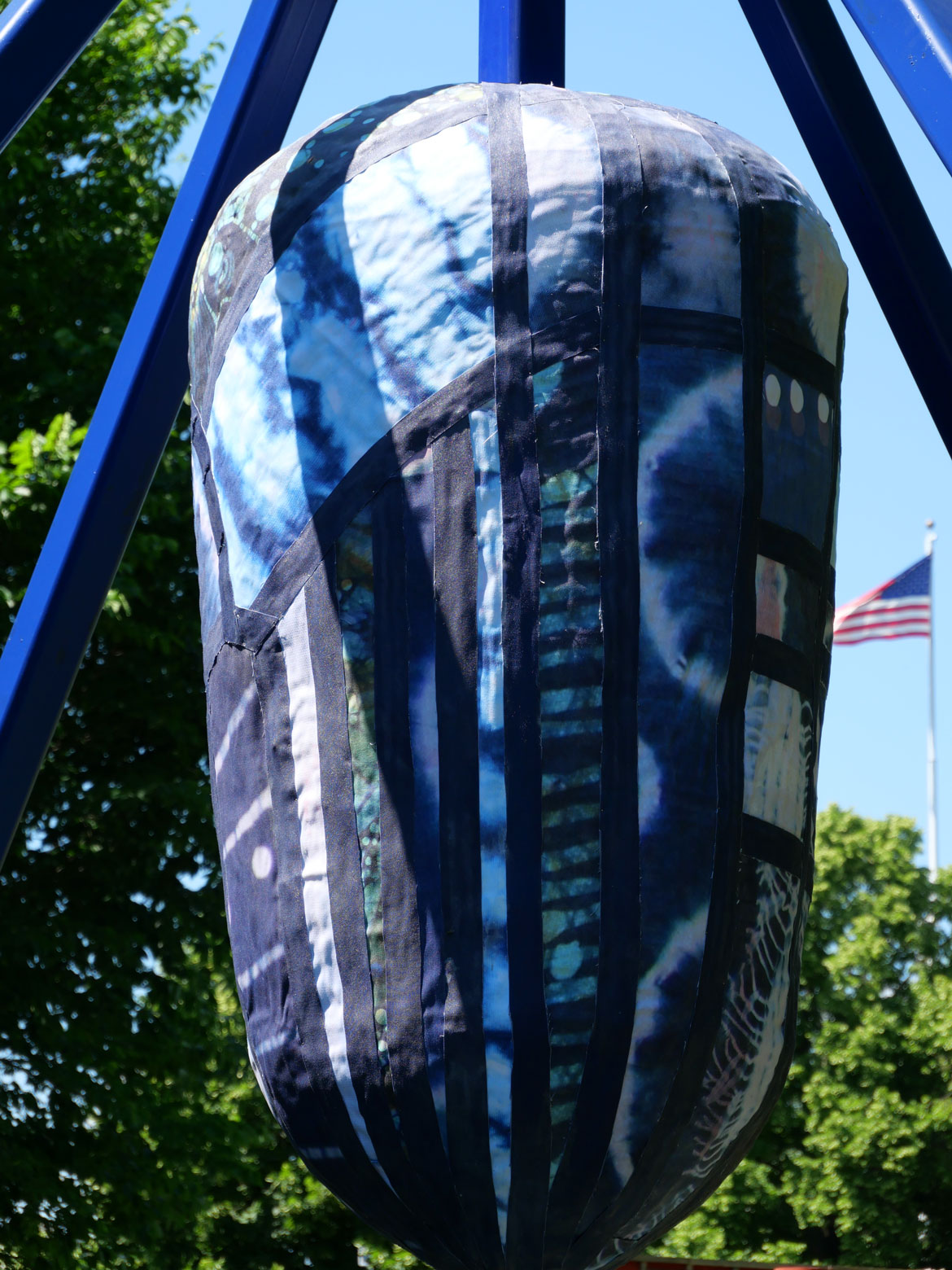
Franklin’s mission, her calling from her ancestors, she says, is “to know who they are and speak to their humanity and to understand why they wanted sovereignty like everyone else.”
“We’re walking and praying homage to them. The program is connected to African-American baptism when people would wear white and walk to the river,” Franklin explains. The procession will also include a meditation and sound bath led by yoga and meditation instructor Marlene Boyette. And participants will be asked to answer a writing prompt: “If you could speak to Mark, Phillis and Phebe, what would you say to them?”
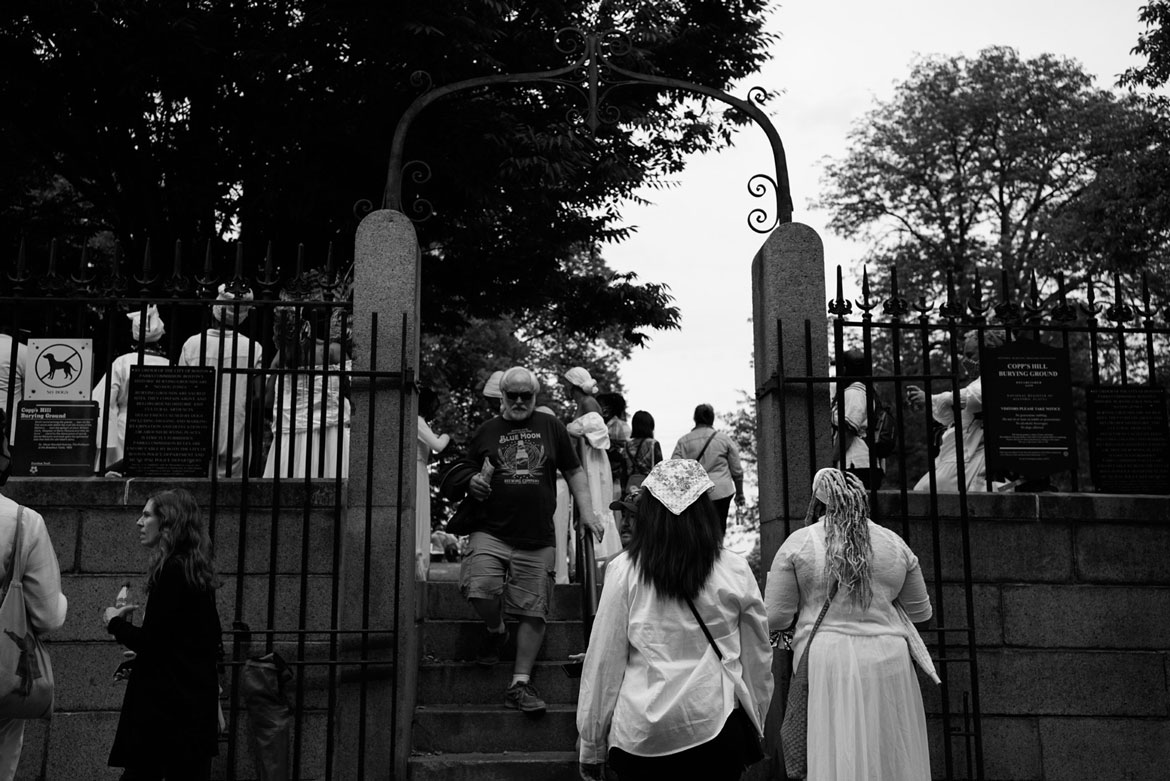
Franklin’s installation and the processions are part of her two-decades-long “Indigo Project,” which has included making “Ancestor Slave Cabins,” ring shouts, conjure bottles, drawings, collages, tapestries, and a fictional book and short film imagining a woman enslaved in Virginia in the mid 1800s.
“There are times when it is difficult to feel so much. I’ve had to learn through trial and error, through friends, how to balance all these emotions,” Franklin says. “…There’s no way that we are not walking around with PTSD [post-traumatic stress disorder] from enslavement. When people were liberated from plantations and such we didn’t get therapy. What do you do with it?”
Franklin says, “For them to make it through with those odds just reminds me that we are phenomenal people.”
“I think my connection to indigo is a very spiritual connection,” Franklin says. “Because prior to enslavement Africans grew indigo, they grew cotton, they grew tobacco and rice. They took the best of us during enslavement. They took people who knew things, people who could do things.”
“We still carry that magic with us, that conjure,” Franklin says. “And that energy is what I instill into my work.”
Previously:
• “Ife Franklin’s Ancestor Slave Cabin and Ring Shout,” Sept. 11, 2017.
• “On Juneteenth, Ifé Franklin Debuts ‘Slave Narrative’ Film,” June 18, 2021.
• “Photos: Ifé Franklin’s Juneteenth Celebration,” June 21, 2021.
• “Artistic Responses To Inequities In Cancer Care For People Of Color,” Nov. 27, 2023.
If this is the kind of coverage of arts, cultures and activisms you appreciate, please support Wonderland by contributing to Wonderland on Patreon. And sign up for our free, occasional newsletter so that you don’t miss any of our reporting. (All content ©Greg Cook 2024 or the respective creators.)
